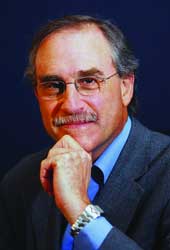The many myths that enshroud government outsourcing

No truth to charge of too much outsourcing.
The New York Times has discovered federal contracting. And according to the paper, it's not a pretty picture. In a Feb. 4 front-page story, the newspaper reported that the government's reliance on contractors has almost doubled in recent years, nearly half of all contract actions were not fully competitive, and in some cases, hiring contractors is more expensive than having federal employees do the work. The story also contends that the rush to contracting is the result of consecutive administrations slashing the federal workforce so they could claim to have reduced the size of government, when all they really were doing was quietly shifting work from federal to contractor employees.All told, the New York Times article implied that we are on the verge of outsourcing our government and creating ethical and constitutional crises of major proportions.On one level, it is heartening that the mainstream press is covering federal contracting issues. After all, the government's growing reliance on contractors is a trend that's not going to change. And there are significant management, workforce and other policy issues that clearly must be addressed. Unfortunately, as that article demonstrates, the issues are easily misunderstood when one fails to dig beneath the surface.For example, take the key themes emerging from the story. Clearly, the role of contractors and dollars spent on them have grown significantly. But this growth has taken place while the federal government's mission has also expanded. As a proportion of the government's operational budget, spending on services contracts has increased from about 21 percent in fiscal 2001 to 24 percent in fiscal 2006 ? not quite the unconstrained, headlong rush to contracting portrayed in the article.The newspaper also reported that 48 percent of all contract actions did not involve full and open competition. Even if that is accurate, does it mean a lot? Not really. After all, in services contracting, well over half of all contract actions in a given year involve modifications to existing contracts and options on them. Unfortunately, the article completely missed that context.Similarly, the article's simple acceptance of the old canard that the growth in contracting has resulted from a massive slashing of the federal workforce simply isn't accurate. As the Government Accountability Office has reported, virtually all of the personnel reductions during the 1990s took place in the Defense Department, which was realigning after the Cold War and going through multiple rounds of base closures.Reductions in civilian agency employment totaled only about 3 percent. Yet during that time, service contracting grew more than twice as fast in the civilian agencies as it did in DOD. Clearly, poor personnel planning and other personnel limitations have at times driven agencies to outsource functions. But this has been the exception, not the rule.More importantly, the government must now compete in the open, broad market for talent and, for many different reasons, typically doesn't fare too well when doing so.That helps explain the reason, as the article points out, why contractor employee compensation is sometimes substantially higher than that of a government worker. For starters, the article erroneously and misleadingly compared the fully loaded rate for a contractor with the base salary of a federal employee. More significantly, the pay gap is a well-known phenomenon, which is far more reflective of the government continuing to lag behind the private sector in personnel compensation and policies than of expensive contractors.The face of government is changing. The role of contractors in government is also changing. Both involve significant public policy issues. Thus, we should be pleased that the general public, through the mainstream press, is starting to engage in these important discussions. But as with Congress and others, the discussion must be balanced and based on realistic critical analyses. Facts matter; so does context.

Stan Soloway is president of the Professional Services Council. His e-mail address is soloway@pscouncil.org.

Stan Soloway
Stan Soloway is president of the Professional Services Council. His e-mail address is soloway@pscouncil.org.
NEXT STORY: Online@washingtontechnology.com

